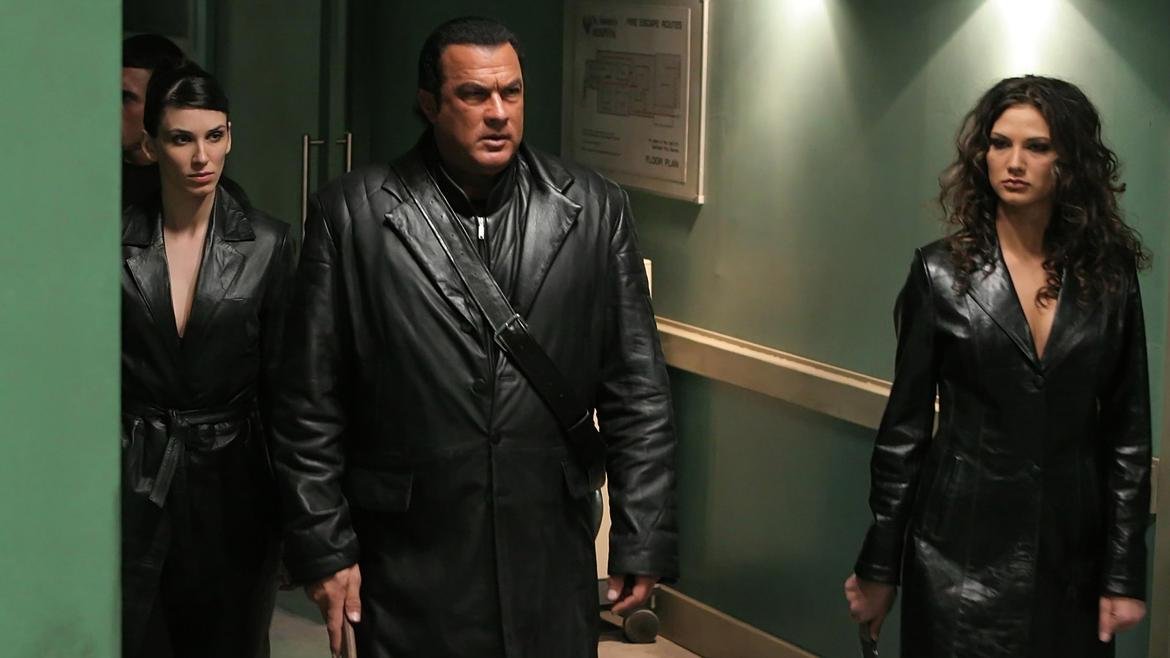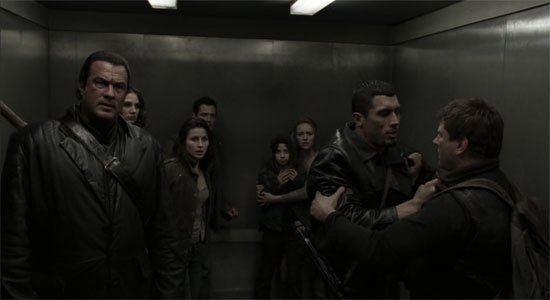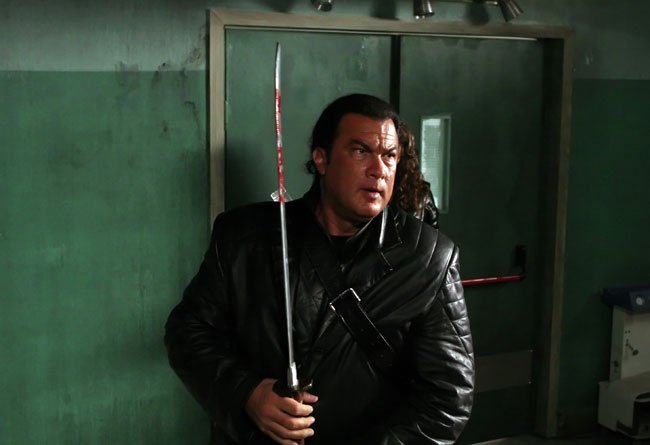Steven Seagal’s lone horror flick, Against the Dark, celebrates its fifteenth anniversary this week. It went straight to video on February 10th, 2009. Directed by Richard Crudo, I wouldn’t list it amongst the infamous actor’s best films. I know it’s popular to trash the guy these days, and I completely understand why, but he does indeed have a handful of credits from early in his career that I absolutely dig. So, why am I celebrating this particular film and its dubious merits? Well, I happen to be friends with Mathew Klickstein, the guy who penned the original script that Seagal subsequently rewrote (ol’ Steve goes uncredited).
Klickstein was initially overjoyed when his script, originally titled Last Night, was sold. His tale was a bleak character-centric sci-fi-tinged horror yarn that sought to take a realistic look at what the last humans might have to face in a ruined world. You can probably imagine Klickstein’s surprise when he found out that the notorious performer was the one producing the film and rewriting the piece to include a character worthy of his inclusion onscreen. The end product is mostly unrecognizable from what the young writer had originally put on paper. The busy Klickstein doesn’t seem bitter about the experience, though. On the contrary, he generally laughs it off. I’m still hoping that he’ll write another movie about his experiences with the project, considering it would make for a fine farce.
So, how is the actual film, though? First off, though Seagal receives top billing, he’s really only a supporting character and one that is given too much attention for his actual function within the story. Even if I didn’t know what I knew about the script, it’s obvious that his character (the leader of a team of vampire hunters) was clumsily stapled onto the side of the main narrative. There are tons of shots of Seagal and his small group walking across the screen in their creaking leather outfits (I couldn’t help but think of that old SNL skit “The Leather Man”) that seem to just be Crudo trying to get as much screentime as possible for his star.
Furthermore, we rarely see Seagal speak while on camera. Most of his lines were clearly dubbed in post-production by a different actor and then laid over the visuals as Seagal is walking away or when another character is reacting to what he’s saying. Many of his close-ups look to have been shot separately from the main production and then edited back into the film to appear as if he was there. My guess is Seagal spent a day or two working, mostly without the majority of the rest of the cast, and then Crudo and editor Tim Silano did their best to incorporate as much of the footage as they could, even if it served no purpose in moving the story forward.
The main plot actually concerns a ragtag group of survivors trapped in a derelict hospital trying to evade plague victims who have essentially mutated into the aforementioned highly aggressive vampires. Civilization has crumbled, but unbeknownst to them, a nearby military base is planning a bombing raid to sterilize the entire area. If our heroes don’t clear the area by dawn, they will surely be destroyed along with the hordes of infected.
The group of survivors is made up of mostly competent, but unknown performers in the lead. Supporting roles larger than Seagal’s feature some familiar faces, however. Linden Ashby (aka Johnny Cage from the original Mortal Kombat film) and the always-welcome Keith David provide a little bit of star wattage. To be fair, David doesn’t get much to do, though. Duane Johnson’s cousin and stunt double Tanoai Reed plays one of the vampire hunters and gets all of the best fight scenes. Reed’s scenes, while jarring in tone as they’re shot like martial arts action sequences, are well done with fight choreography you can actually see. This is in opposition to Seagal’s “fights” that are obscured by shaky cam, quick cuts, and epileptic editing to conceal the lumbering actor’s immobility.
The hospital setting, though featuring an aesthetic not unlike your local seasonal haunted house, is utilized effectively, giving the film a nicely grimy backdrop. There’s also some decent gore on display, though it’s mostly just lots of spattered blood and entrails props as opposed to legitimate makeup effects. The large number of extras, especially those made up of vampires, make the film feel bigger than it is. Plus, there’s some footage of helicopters and fighter jets that aid in this department, as well.
Philip White’s score is unfortunately kind of generic and much too on the nose when highlighting certain action beats. However, I did enjoy the electronic piece that’s used toward the end of the film. I mentioned the editing earlier, and I’m actually kind of impressed with Silano’s efforts at stitching together the mangled narrative while doing his best to polish the awkwardness of Seagal’s insertion. Ultimately, though, the end results are a bit of a mess.
Richard Crudo’s Against the Dark is an obvious slapdash cash grab for an aging Steven Seagal. That being said, at 94 minutes, it doesn’t overstay its welcome, and it was kind of fun to see the filmmakers contort to force the actor into the film. I admit I may enjoy it because I’ve been privy to behind-the-scenes details, so I’m not going to say I recommend it. However, if you’ve found aspects of the Resident Evil film series enjoyable, or if you like seeing cinematic train wrecks, you might find something to dig here.
Michael Cavender




